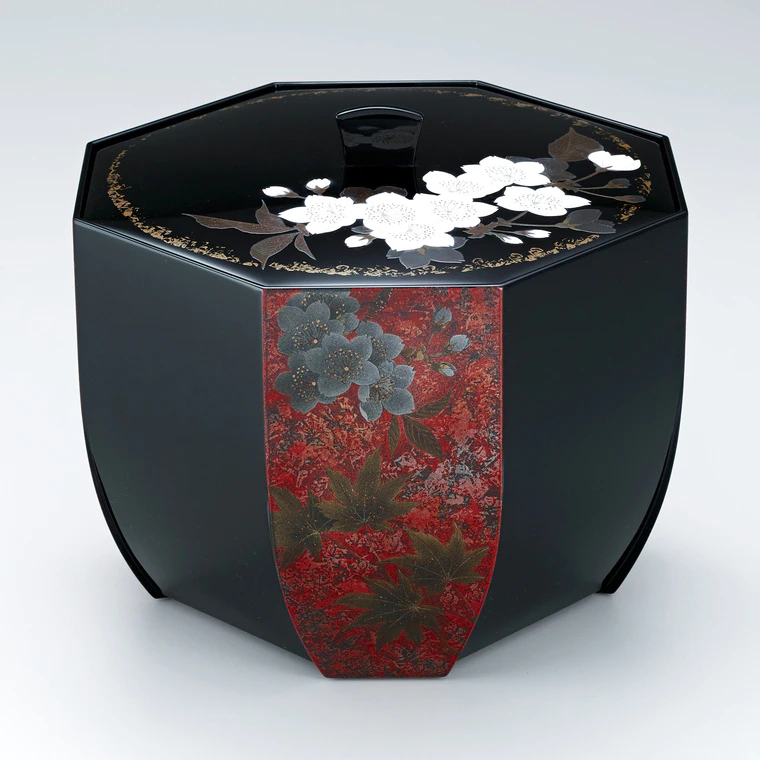Tea ceremony fresh water jar with cherry and maple design in Jōhana makie.
H 17.5 x W 20.3 x D 20.3 cm,Year.2019Jigoemon Ohara XVI
1979 -- Lacquerware
- Awarded 5 times at the Japan Kōgei Assoc. Exhibition
-
Price Range
¥220,000 - 5,500,000
Info
The prices of the artworks on Gallery Japan are determined by the artists themselves and are published directly on the website.
close
About the Artwork
With a lid decorated with cherry blossom patterns, four sides of this octagonal water jar are made wider, while the other four sides are adorned with a cloud brocade pattern atop a sophisticated gold paint background. Its bottom narrows into the four legs it stands on. When it is filled with water for tea ceremonies, the layered silver paint shines through the refracted light. The wooden structure is made from cypress wood using a combination of joinery and carving techniques, and as with other similar pieces, the finishing consists of multiple layers of hand-polished lacquer, with the first layer soaked into the wood with cloth or linen.
Description
-
CategoryLacquerware
-
MaterialsUrushi lacquer, Cypress, Hemp cloth, Gold powder, Silver powder, Pigments
-
DimensionsH 17.5 x W 20.3 x D 20.3 cm
-
Year presented2019
-
RarityUnique
-
Paulownia BoxIncluded
-
Artist SignatureSigned (name of artwork, paulownia box)
Techniques Used
Urushi-e
Urushi-e (“lacquer pictures”) is a decorative technique that consists of motifs painted in colored lacquer. Urushi-e is the oldest and most fundamental decorative lacquer technique.
Maki-e
Maki-e (literally “sprinkled pictures”) is a representative lacquerware technique that originated in Japan around 1,200 years ago. Maki-e is done by painting lacquer motifs on the surface of a piece using a fine brush and then sprinkling gold powder onto the lacquer before it hardens, producing luxurious decorations.
Lacquering
Lacquering (kyūshitsu) is the art of applying lacquer to a substrate using spatulas or brushes. The technique includes a range of processes, from reinforcing the substrate with cloth to building up the foundation and applying the middle- and top-coats. The final coat can be left as is (nuritate), polished with charcoal to a high-gloss finish (roiro shiage), or given one of several hundred alternative (kawarinuri) finishes. Lacquer application is known for both its technical difficulty and richly expressive qualities.
Selected exhibitions
- The 66th Japan Traditional Kōgei Exhibition (2019)
- Selected
Please feel free to contact us to commission work, check artworks available for purchase etc.

